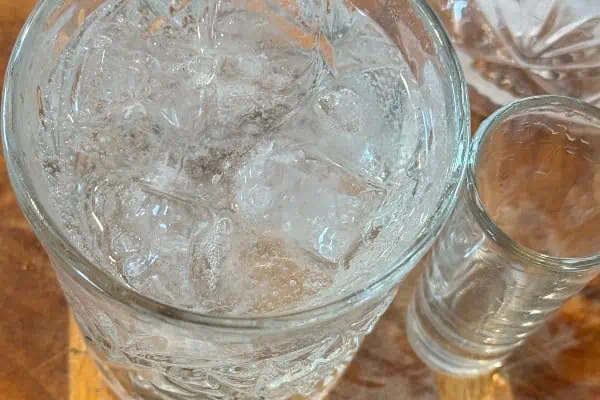A familiar sight at many a gathering during the holiday season is the punch
bowl, ranging in formality from fine, etched crystal to battered salad bowl, filled to the brim with a fruity, bubbly concoction, set on a tablecloth stained here and there by the berries that slipped ‘twixt cup and lip and surrounded by a jumbled assortment of the host’s cups and mugs.
The punch will range in complexity from the simple orange juice, ginger ale and cranberry concoctions remembered from the birthday parties of our youth, to sophisticated and balanced combinations of spirits, syrups, bitters and freshly squeezed fruit juices. You never know which one you’re going to get, so it’s a bit of a gamble taking the punch option at a party, and to be honest, I usually stick to the white wine out of self-preservation.
However, with the revival of interest in the finely built cocktail has come a revival of interest in the well-built punch, and a corresponding revival of punch-making skill. At speakeasy-type bars in London and New York the punch bowl is a common sight at tables of four or six — and as Joy of Cooking tells us, punch is a great way to serve cocktails to several people at once, without all that mixing, stirring and straining.
The word “punch” is derived, according to the Shorter Oxford Dictionary, from the Sanskrit word for five (pañchan) and refers to the five ingredients of the true punch: spirits, sugar, citrus, water and spice. The original punch came to England in the early 1630s from India, via employees of the British East India Company, and quickly spread to Europe and North America. When punch is wine, cider or brandy-based and served warm it falls into the “wassail” category; with the addition of sparkling water, a cold punch becomes a “cup.” This is but a small sampling of the esoterica associated with this august beverage, but the important point is it’s just as easy to make a good punch as it is to make a bad.
We have a range of choices in the punch line, from the refined and intricate formulae to be found in the pages of Death & Co., the recent cocktail bible from the bar of the same name in New York City, to the practical Champagne or whisky cups offered by Joy of Cooking (though I’d tone down the sugar in those recipes a bit.)
I’ve also found Martha Stewart to be an excellent source for simple, balanced, easy-to-build punches for the harried host. The rum and apple cider punch here is adapted from one of Ms. Stewart’s online recipes, with lemon subbed-in for orange, a bit of birch syrup added to balance the acid, and a handful of cranberries thrown in for tartness and colour.
The beauty of this punch is you can be fancy or casual — it’s great just left on a back burner at an après-ski gathering, for example, or served in a fancy decanter on a white tablecloth. Finally, if you leave out the rum and ask the adults to add their own should they wish, the punch will serve the thirsty under-age crowd too.
Hot Apple Cider and Rum Punch
8 cups (1.3 L) apple cider (substitute fresh, pressed apple juice)
1 apple, thinly sliced crosswise
1 lemon, thinly sliced crosswise
2 cinnamon sticks
1-inch piece fresh ginger, peeled and thinly sliced
2 Tbsp. (30 mL) birch syrup
½ cup (125 mL) low-bush cranberries
2 cups (500 mL) amber rum
In a large pot, combine apple cider, apple slices, lemon slices, cinnamon sticks, ginger and cranberries. Bring to a boil on high heat; reduce to a simmer and cook 5 minutes. (Keep warm on low heat, up to 2 hours.) Remove from heat and stir in rum. Remove cinnamon sticks—otherwise they’ll overpower the other flavours. Transfer to a punch bowl; serve warm. For individual servings right from the stove, add 1 to 2 oz. rum to each mug or glass and fill up with 4 to 8 oz. of punch mixture.




